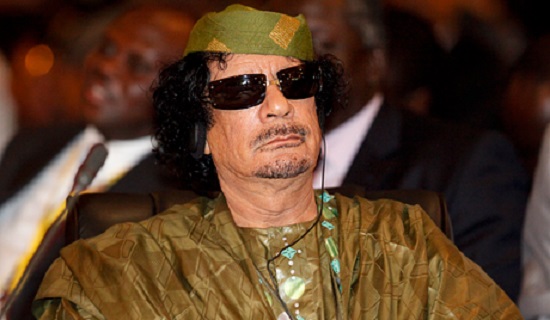
Tripoli, Libya | AFP |
Five years after Libyan strongman Moamer Gaddafi was captured and killed, the country remains unstable, with political and military rivalries sabotaging a viable state and the fight against Islamic State group jihadists.
Following are key markers in the oil-rich North African country’s bid to become a functioning state.
2011: Eliminating Kadhafi
Gaddafi, who ruled Libya for 42 years, is killed on October 20 as he tries to flee his hometown Sirte. Three days later, the former rebel National Transitional Council (NTC) declares Libya’s “total liberation” and says more than 30,000 died during the nine-month NATO-backed uprising that began in February amid the wider Arab Spring movement.
2012: Attacking US interests
US ambassador Chris Stevens and three other American staff are killed in a September 11 attack on their consulate in second city Benghazi. Radical Islamists use the Libyan revolt as cover to carve out zones of influence and violence is widespread. Libya plunges further into chaos with foreign delegations and airlines pulling out of the country. Oil exports plunge after guards force the closure of shipping terminals.
2014: Civil war, rival governments
Military strongman Khalifa Haftar, backed by Egypt and the United Arab Emirates, launches an offensive in mid-May against Islamist groups in eastern Libya.
In August, a coalition of Islamist-led militias under the Fajr Libya (Libya Dawn) umbrella seizes control of Tripoli. Libya’s internationally recognised parliament flees to the eastern city of Tobruk, while a rival government led by the General National Congress assembly remains in the capital. The GNC was recognised as Libya’s government by the NTC in August 2012. The country finds itself with two governments and two parliaments.
2015: IS threat grows
On January 27, an attack in Tripoli that kills nine people, including five foreigners, is claimed by the jihadist Islamic State (IS) group.
In February, the group releases a video showing the beheading of 21 Coptic Christians — all but one of them Egyptians — prompting Cairo to launch air strikes on IS targets in Libya.
IS claims several other attacks in Libya where it has fed on the chaos to gain a foothold after seizing swathes of territory in Syria and Iraq.
On June 9, 2015, IS fighters capture the coastal city of Sirte east of Tripoli.
Libyan pro-government forces overrun IS’s headquarters at the Ouagadougou conference centre in Sirte in August 2016, three months after launching an offensive to drive the jihadists out of the city.
But as of October 2016 jihadist holdouts are still cornered in a seaside residential district.
2016: Political deadlock and migrant crisis
On March 12, a UN-backed Government of National Accord (GNA) takes up office in Tripoli headed by prime minister designate Fayez al-Sarraj, three months after a power-sharing agreement was signed.
The GNA is the centrepiece of Western hopes to stem an upsurge of jihadism in Libya and halt people trafficking across the Mediterranean that has led to thousands of drownings.
It was intended to replace two rival administrations but has failed to win a vote of confidence from the parliament in Tobruk while the Tripoli-based GNA considers it illegitimate.
But the GNA suffered a new setback on October 14 after the rival Government of National Salvation seizes key offices in Tripoli.
 The Independent Uganda: You get the Truth we Pay the Price
The Independent Uganda: You get the Truth we Pay the Price



